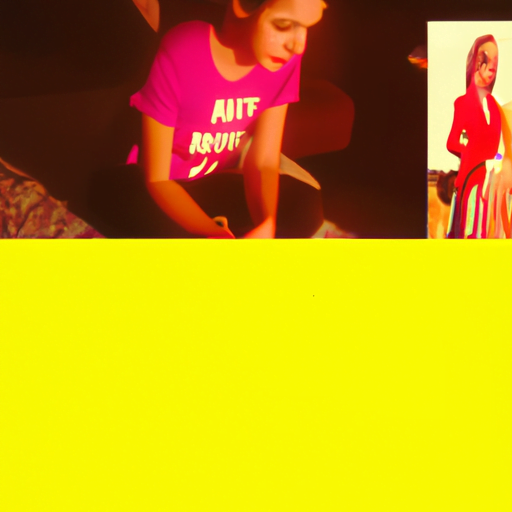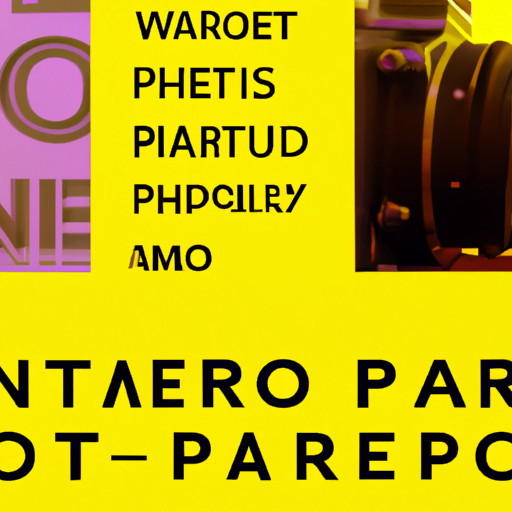
-
Table of Contents
- The Impact of Typography in Film and TV Titles
- The Importance of Typography in Film and TV Titles
- The Creative Choices Behind Typography
- The Influence of Typography on Audience Perception
- Case Studies: Impactful Typography in Film and TV Titles
- 1. “Pulp Fiction”
- 2. “Game of Thrones”
- 3. “La La Land”
- The Power of Typography in Film and TV Titles
- Key Takeaways
- Conclusion
The Impact of Typography in Film and TV Titles

Typography plays a crucial role in the world of film and television. It is not just a means of displaying information; it is a powerful tool that can evoke emotions, set the tone, and enhance the overall viewing experience. In this article, we will explore the impact of typography in film and TV titles, examining its importance, the creative choices behind it, and its influence on audience perception.
The Importance of Typography in Film and TV Titles
Typography in film and TV titles serves multiple purposes. It not only introduces the audience to the content but also sets the mood, establishes the time period, and provides a glimpse into the narrative style. The right typography can create anticipation, intrigue, and even convey the genre of the production.
One of the primary functions of typography in film and TV titles is to capture the attention of the audience. In a world filled with distractions, a well-designed title sequence can captivate viewers and draw them into the story. It serves as a visual hook, enticing the audience to invest their time and emotions into the film or TV show.
The Creative Choices Behind Typography
The creative choices behind typography in film and TV titles are carefully considered to align with the overall vision of the production. Typography can be used to reflect the era in which the story is set, establish the tone, or even convey the personality of a character.
For example, in the film “The Great Gatsby,” the title sequence uses Art Deco-inspired typography to transport the audience to the 1920s, the era in which the story takes place. The elegant and ornate letterforms evoke the glamour and excess of the time, setting the stage for the narrative.
Another example is the TV show “Stranger Things.” The title sequence features a retro-inspired font that pays homage to the 1980s, the decade in which the show is set. The typography, combined with the use of vibrant colors and glitch effects, creates a nostalgic and mysterious atmosphere, perfectly capturing the essence of the series.
The Influence of Typography on Audience Perception
Typography has a significant influence on audience perception. The choice of font, style, and layout can shape how viewers interpret the content and engage with the story. Different typographic elements can convey different emotions and messages.
For instance, bold and uppercase typography often signifies strength, power, and authority. It can be used to convey a sense of urgency or to emphasize important information. On the other hand, delicate and cursive fonts can evoke a sense of romance, elegance, or nostalgia.
Typography can also be used to convey the genre of a film or TV show. Horror movies often use distorted and jagged fonts to create a sense of unease and fear. Comedies, on the other hand, may use playful and whimsical typography to reflect the lighthearted nature of the content.
Case Studies: Impactful Typography in Film and TV Titles
Let’s explore some case studies that highlight the impact of typography in film and TV titles:
1. “Pulp Fiction”
The title sequence of “Pulp Fiction” is a prime example of how typography can set the tone for a film. The use of bold, uppercase, and slightly distorted typography creates a sense of edginess and unpredictability, mirroring the film’s nonlinear narrative and unconventional storytelling.
2. “Game of Thrones”
The title sequence of “Game of Thrones” is renowned for its intricate and detailed map animations. However, typography also plays a crucial role in establishing the epic and medieval atmosphere of the show. The use of gothic-inspired typography with sharp edges and intricate details reflects the fantasy genre and the complex web of power and politics within the story.
3. “La La Land”
The title sequence of “La La Land” is a beautiful example of how typography can evoke a sense of nostalgia and romance. The use of a delicate and cursive font combined with vibrant colors and whimsical animations transports the audience to the golden age of Hollywood musicals, setting the stage for the enchanting love story.
The Power of Typography in Film and TV Titles
Typography in film and TV titles is a powerful tool that can enhance storytelling, evoke emotions, and leave a lasting impression on the audience. It is not just a visual element; it is a language that communicates with viewers on a subconscious level.
By carefully selecting typography that aligns with the vision and narrative of a production, filmmakers and designers can create a cohesive and immersive experience for the audience. Typography has the ability to transport viewers to different eras, convey emotions, and even shape their perception of the content.
Key Takeaways
- Typography in film and TV titles is essential for capturing the attention of the audience and setting the mood.
- Creative choices behind typography reflect the era, tone, and personality of the production.
- Typography influences audience perception by conveying emotions and genre.
- Case studies like “Pulp Fiction,” “Game of Thrones,” and “La La Land” demonstrate the impact of typography in film and TV titles.
- Typography is a powerful tool that enhances storytelling and leaves a lasting impression on the audience.
Conclusion
Typography in film and TV titles is an art form that goes beyond mere aesthetics. It is a strategic and creative choice that can shape the audience’s perception, set the tone, and enhance the overall viewing experience. By understanding the impact of typography and making thoughtful design decisions, filmmakers and designers can create captivating and memorable title sequences that leave a lasting impression on the audience.
